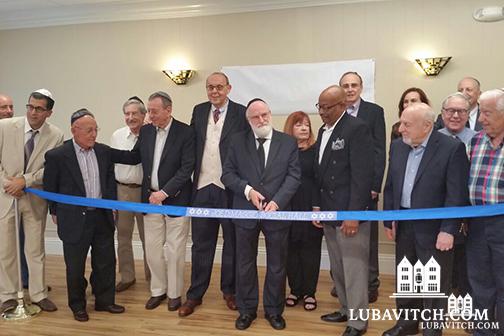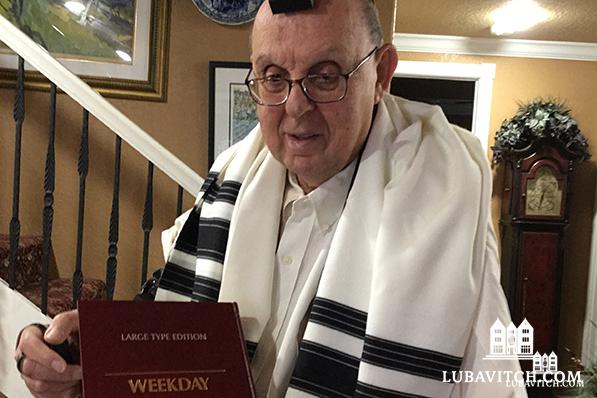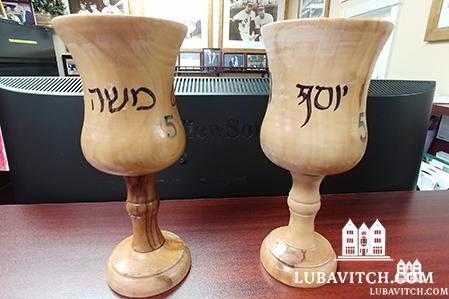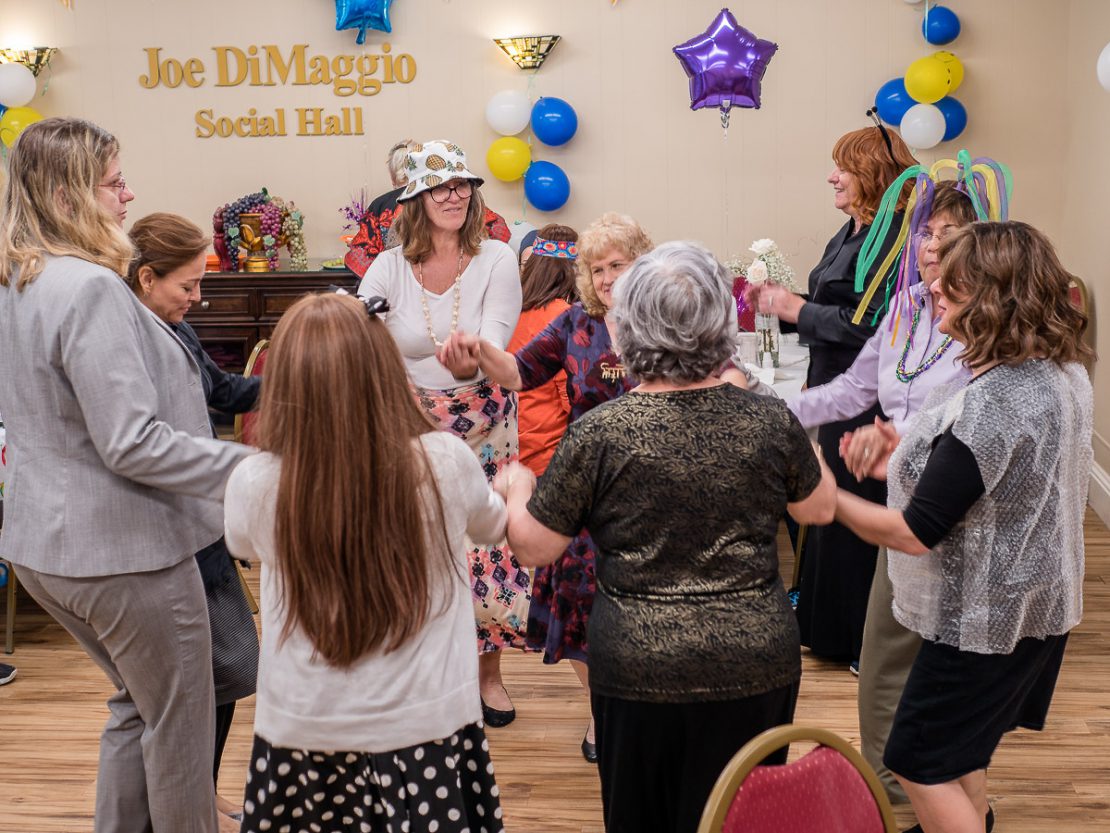By Rabbi Joseph Bronstein as told to Shaindle Fogelman
Joe DiMaggio walks into a Chabad synagogue. This is not a joke. Although he died years ago, Joe has become a friend of our center.
We even named our social hall in his honor.
I’m the rabbi (and cantor) at a Chabad shul in Hollywood, Florida. And this is the story of how a legendary baseball player, an Italian Catholic, hosted numerous bar and bat mitzvahs in the past five years. Because even after death, a mitzvah can live on.
My friend and congregant Morris Engelberg, a practicing attorney in Hollywood, Boca Raton, and Palm Beach, will attest to that. Morris was the sole personal representative of Joe DiMaggio’s estate. Since Joe’s death in 1999, Morris was instrumental in the formation of the Joe DiMaggio Children’s Hospital, the Joe DiMaggio Park, and the Joe DiMaggio Sports Foot & Ankle Center at the Hospital for Special Surgery in New York City, all in the baseball player’s name.
Also, a social hall at a Chabad synagogue.
Well, at what is now a Chabad synagogue, but which once was a Conservative temple. Let me back up a few steps.
Until approximately ten years ago, I was a Judaica distributor in the greater Miami area. My social and professional connections led me to synagogues of all affiliations, among them, the Temple Judea in Hollywood. Established in 1981, the temple was successful for a good long while, until the economy crashed in the early 2000s. But with most of the congregants being retirees at that point, the temple struggled to stay afloat. The ship was in for a nosedive.

The Beit Moshe ben Moshe Synagogue at Congregation Judea Chabad
This is the Temple Judea that later became Congregation Judea Chabad. The congregants were the greatest proponents of the change. Here’s how it happened:
Knowing my synagogue connections, the board turned to me for help in finding a new rabbi. Perhaps new energy could pump life into a sinking institution. I explained to them that I was Orthodox and the rabbis I knew had the same affiliation. They weren’t interested.
A year later they came back to me. The board members had changed their minds. This time, they agreed to switch to an Orthodox synagogue. But not a Chabad shul. As I was leaving my post as a Judaica distributor, I applied for the position. On April 29, 2009, I became the rabbi of the newly called Congregation Judea in Hollywood, FL.
At this point, neither Joe DiMaggio nor Morris Engelberg had entered the story. But they soon would. My original connection to Morris was Rabbi Morton Malavsky. He’s a retired conservative rabbi who became a member of Congregation Judea long before it was Chabad, or even Orthodox. We had been friends for many years through the business, and our relationship deepened after I took over the shul.
When our synagogue first became Orthodox, the original members were, understandably, a little wary. But not Morton. Having studied in the original Lubavitch yeshivah on Eastern Parkway in Crown Heights, he knew the drill.
The microphone had to go. And we’d need a mechitzah. The congregants expected a full wall between the men’s and women’s sections. I explained that a mechitzah can actually be nice. It’s not meant to make you feel separate, it’s merely a divider to enhance concentration. We made it pretty. The room still felt like one and not two separate rooms. And my new congregants were no longer concerned. They were happy.
It must have been four or five years later when one of the members of the original temple asked about my affiliation. “Are you a Chabad rabbi?” Yes, I was, I said. But the shul, I explained wasn’t Chabad. “You’re doing so well,” he said. “Why not make it a Chabad synagogue?”
And so we added the name Chabad to Congregation Judea. And suddenly, things began to change. Before we were successful, but now things had picked up pace and it was exciting.
Rabbi Malavsky had a friend—his attorney named Morris—who never came to shul. Originally from Borough Park, Morris grew up in an Orthodox home. He has a real Jewish neshamah, but by the time he retired and moved to Hollywood, Morris’ synagogue attendance was almost null.
You might say that Joe DiMaggio revived it.
I met Morris at an event and asked him to come over to the shul. He came, he loved it, and began supporting our activities. And the one name that came up in every conversation with him was, you guessed it: Joe DiMaggio, his client and best friend.
Morris’s father passed on before his birth and he was named after him, “Moshe ben Moshe.” As a teenager, he’d sneak out on Friday night to see the games. He was hooked on baseball and later became a successful attorney and professional athlete. That’s when he got to know Joe DiMaggio.
They became best friends. Eventually Joe DiMaggio left his estate to be managed by Morris.
Morris serves as trustee of all of Joe DiMaggio’s assets, and had full control over all licensing rights to the name “Joe DiMaggio.” He is extremely selective about that.
So one day, I offered Morris the opportunity to honor his friend. I said, “Let’s dedicate our social hall to Joe DiMaggio. Let’s name it for him.” Morris was incredulous at first.
“Really?” he asked, “You’re going to dedicate the social hall to a Catholic?” His name wouldn’t be on the sanctuary itself, I explained, but on the social hall wall. Morris loved the idea and funded the project generously. Chabad and Orthodox children love baseball and Dimaggio is an American hero.

That’s how Joe DiMaggio came to be honored by our Chabad shul.
But I wanted to honor Morris too. He’d become a close friend and staunch supporter of our synagogue. So on the day of the grand dedication, when we named the social hall for Joe DiMaggio, we surprised Morris by naming the sanctuary for him, “Beit Moshe ben Moshe.”
He burst into tears, as he later said, for the first time in his seventy-nine-year-old life.
Our shul is thank G-d successful. Next time you’re in the area, stop in for Shabbat services. You’ll feel welcome at our place. And please stay for the Kiddush luncheon. There’s cholent with kishke and beans, just like my Bubby’s. And you’ll get to meet the community: elderly people, young people, little kids.
At the Chabad Joe DiMaggio social hall.
Questions for Morris Engelberg
Morris Engelberg has been the sole executor of Joe DiMaggio’s will for thirty-six years and controls full licensing rights to the Joe DiMaggio brand. Now a key supporter of Chabad in West Hollywood, FL, he spoke with Lubavitch International.

How did you meet Rabbi Bronstein and come to support his Chabad center?
I had a friend, Rabbi Morton Malavsky. I was his attorney. Before he died he introduced me to his friend, Rabbi Joseph Bronstein.
“You’ve got to meet this Israeli rabbi,” he told me. “He’s exceptional. The most energetic person I’ve ever met. Everyone feels good around him. He’s also Americanized. It’s something very special.”
So I go out there one day. I open the front door. The synagogue is in a shopping center, in the poorer section of Hollywood. I said to my wife, “I ain’t going in here without a hard hat.” I saw loose wires.
But I walked through and met a few people. I said to my wife, these people are much nicer than the ones at the fancy temples. I mean, look at this place. These people are actually coming to pray, and they have events. So I said to my wife, let’s do something.
I was poor growing up, and Rabbi Bronstein is constantly giving out of his own pockets. You go to fancy temples—like the ones in Aventura—and they charge you $1,500 for bar mitzvah lessons. Me, personally, I don’t care because I can afford it, but I feel bad for other kids. I don’t believe in big parties, just a nice luncheon. But what about the kids in West Hollywood who can’t even afford that?
It’s called giving back.
You seem to have enjoyed getting involved in the actual building of the shul.
Yes. We had all the materials, raised all the ceilings, we created the Taj Mahal. It’s gorgeous. We bought everything. We shopped on Saturday nights. I have a friend, a black man, aged seventy-three. He came out of retirement just to get us approved. It came to a point that he was in the synagogue with us so often, working on this or that, he ended up learning all the Hebrew songs.
The last project was building the pews—they were forty-year-old pews. And every pew had to be taken apart. We came out with a crew that worked from 5:00 P.M. to 5:00 A.M. so that no shacharit services would be missed a single morning.
I enjoyed doing it.
Where did you meet Joe DiMaggio?
When I was in second grade, my teacher made us stand up and answer questions about our families. It was the first day of school. I didn’t know what I would say when they would ask about my father. He died when my mother was six months pregnant with me. But my brother is very smart. “Just say deceased,” he said, “the teacher barely speaks English, he’ll likely think that’s the name.”
But as a seven-year-old kid, I couldn’t remember the word deceased. So I blurted, “Joe DiMaggio.” This was 1947. The rabbi said, “your mother is married to an Italian Catholic?!”
When I was finally introduced to Joe DiMaggio many years later, I told him this story. I was forty-three by then and simply wanted to meet him. I had just completed a big job for a client of mine, a philanthropist in Miami. He asked what he could do for me and I said I just want to meet Joe, and sure enough, Joe DiMaggio called me that night.
We met up for breakfast the next morning. And that was the beginning of a friendship that lasted many years. He became the father I never had.
Did you ever discuss Jewish identity with Joe?
Oh my, yes!
My mother invited Joe DiMaggio for Shabbat dinner. His favorite food was chicken, and Joe liked my mom. When I began to sing the Kiddush he looked at me and said, “Boy I didn’t know you’re so religious.” I said, “Joe, I’m not. I’m traditional, I went to yeshivah and I know Hebrew.”
I saved the wine cup he drank from, and mine, two wooden cups, and hired an artist to paint his Hebrew name, Yosef (for Joseph), and my Hebrew name, Moshe, on each of them.
Joe DiMaggio went to bar mitzvahs. I even have a picture of him wearing a yarmulke at my daughter’s wedding (1992). He was a real mensch and had no prejudices.

How do you imagine he’d react seeing his name on Chabad’s building?
I know Joe is looking down and saying, “Morris, you did the right thing.” He would be so proud. If this rabbi came up to him, he would have said yes. His best friends in life were Jewish. He felt comfortable around Jewish people. He loved the Jewish people.
Joe loved children. So when I see a child celebrating his bar mitzvah at the Joe DiMaggio Chabad Social Hall, I know that they’ll keep that invitation forever. No other synagogue will ever bear the license “Joe DiMaggio Social Hall.”
Is it fair to say that you have become more involved in Yiddishkeit in recent years?
From the day I was born, my love for Judaism was at 100 percent, but I would rate my prayers at fifty percent. After meeting Rabbi Bronstein it increased to 100 percent. But it wasn’t just the prayers. Prayers are prayers. It was the community he created.
I watch him. At Friday night dinners he comes out dancing and singing. He has this energy and love for Judaism. He’s a cantor also, and I love to sing. I sing the prayers.
I put on tefillin for the first time in sixty years. And I now get called up to the Torah. I wasn’t allowed to be called up where I was raised, because we couldn’t afford the expected donation. But if I kept track of my aliyahs since my bar mitzvah, I would now have 571 under my belt.
Rabbi Bronstein changed my life. He brought me back to who I was.
What’s his secret?
This rabbi didn’t just create a temple, he created a family. It’s a different kind of camaraderie. Every Friday night, a full-course dinner is served to all the congregants at no charge. When I sponsor it, I bring in first cut meats and all of my friends come.
They are also beginning a Hebrew reading course soon.
I think this is great. You walk in and you just feel good. There are people I know, friends of mine, that are very active in the Jewish non-profit world. They give money to the Federation, but they don’t read Hebrew. The success is in the little things as much as it’s in the big ones.
This article was featured in Lubavitch International, Summer 2019. To subscribe and gain access to archives of previous magazines, visit www.lubavitch.com/subscription

Jerald
I belong to the chabad of the south bronx and have worked at Yankee Stadium 🏟 a long time. Can you share the picture of joe in a yarmulke? Thanks.
Evan Greenberg
Jerald, I would love to see that … even as a Red Sox fan from western Massachusetts. After all, the great Jewish songwriter Paul Simon mentioned Joe Dimaggio in “Mrs. Robinson”.